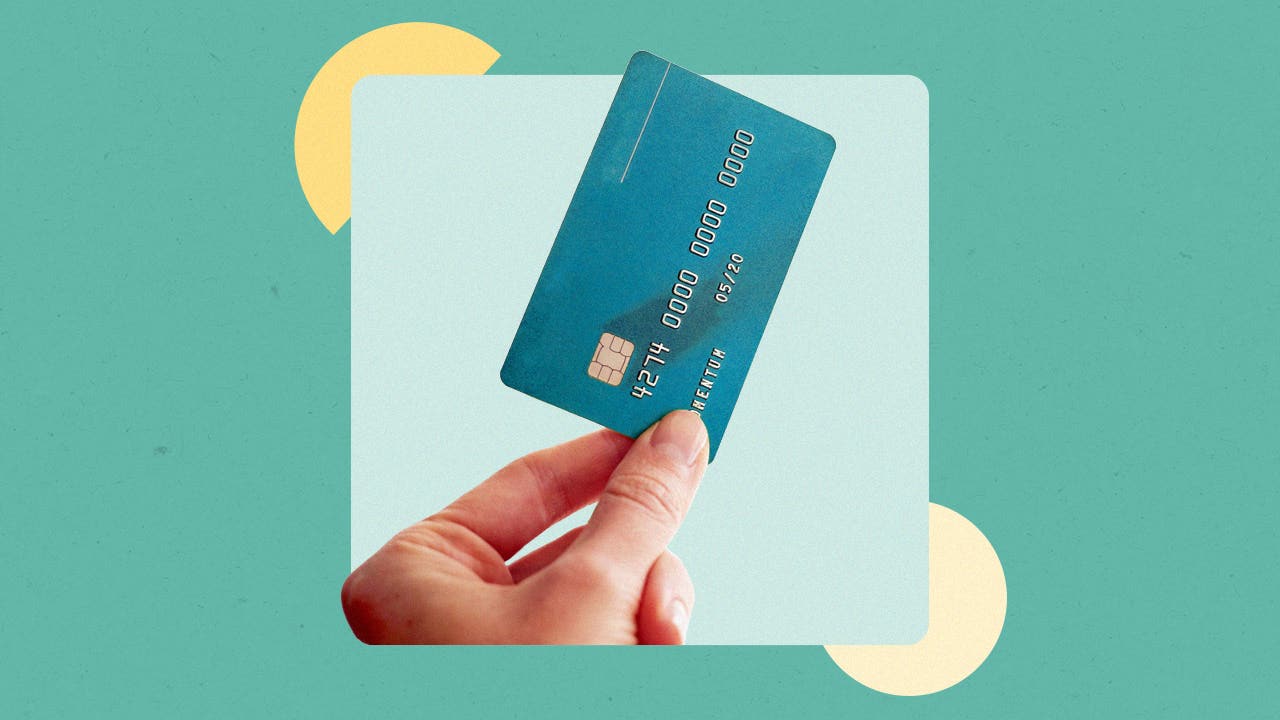Types of rewards credit cards

Key takeaways
- Rewards credit cards provide benefits in the form of cash back, points or miles.
- You can earn credit card rewards through eligible spending or promotional offers, such as welcome bonuses or a referral bonus.
- Cash back cards are usually better for earning rewards on everyday spending. Cards that earn points or miles are great for frequent travelers or those who want to maximize their rewards.
Many different types of credit cards are available, including rewards credit cards. These cards come in various forms and offer multiple types of rewards for the eligible spending you do on the card. These cards target specific types of expenses, such as everyday spending or travel costs, which may enable you to earn bonus rewards based on your most frequent purchases.
To choose the right rewards credit card for you, you’ll need to evaluate the rewards program for each card you’re considering. You’ll also need to analyze your spending habits and the overall structure of the card. If the card you choose doesn’t match your spending habits or lifestyle, you’ll risk missing out on opportunities to earn rewards and get maximum value.
What are credit card rewards?
Rewards credit cards offer rewards in the form of cash back, points or miles. From there, you can earn a flat rewards rate on all purchases or a higher rewards rate on purchases made in select categories. For example, bonus categories may include travel, dining or groceries.
Typically, cards that offer higher rewards rates in select categories come with fixed or rotating categories, the latter of which may change on a monthly or quarterly basis. Rotating categories are also more likely to be subject to monthly, quarterly or annual spending limits — after which you’ll earn a lower rewards rate on those purchases. However, some rewards credit cards with fixed categories offer spending limits, too.
In addition to earning rewards on spending, you can also earn rewards in other ways. For example, credit card companies typically offer new cardholders a welcome bonus, which they can earn by spending a certain amount on the card within a specific time frame. You can also usually earn more rewards through limited-time offers or referral bonuses.
Advantages and disadvantages of the different types of credit card rewards
| Cash back credit cards | Points credit cards | Miles credit cards | |
| Advantages |
|
|
|
| Disadvantages |
|
|
|
Cash back: Best for simplicity seekers
Cash back is a straightforward way to get rewarded for using your credit card. You’ll earn a percentage of cash back on each eligible purchase you make with the card. Some cash back cards offer a flat rate on all purchases (for example, 2 percent cash back on all purchases). In this case, making a $100 purchase with a 2 percent cash back card would put $2 into your rewards balance.
Other cash back cards offer higher cash back rates for particular types of purchases (bonus categories) and a lower rate on general purchases. For example, a card might offer 3 percent cash back on grocery purchases, 3 percent cash back on gas purchases and 1 percent cash back on all other purchases.
Some cash back cards also offer higher rates of cash back in categories that rotate each month or quarter. These cards usually have a spending cap and require category activation to earn the higher rate.
The Chase Freedom Unlimited® is a good example of a card with several bonus categories, offering:
- 5 percent cash back on travel purchased through Chase Travel℠
- 5 percent cash back on Lyft purchases (through March 2025)
- 3 percent cash back on dining and at drugstores
- 1.5 percent cash back on all other purchases
How cash back programs work
When you make an eligible purchase with a cash back credit card, you receive a small percentage of your purchase back. The percentage you earn depends on the card. As mentioned, you might earn the same rate of cash back on all purchases or a higher rate on particular types of purchases.
The redemption process is typically simple. Your issuer should have a redemption portal on its website that offers different redemption options.
The most common redemption options for cash back cards include:
- Statement credits
- Checks or direct deposits to a bank account
- Checks
- Gift cards
- Select merchandise
- Charitable donations
Before redeeming, check with your issuer to ensure you know the rules for cash back redemption and that you’re getting the best value (typically from getting statement credits or direct deposits).
Cash back is Americans' favorite credit card reward because it's simple and universal. Who couldn't use more cash, right? I love to use cash back cards to maximize my family's everyday spending.— Ted Rossman | Bankrate senior industry analyst
Points: Best for rewards maximizers
Many of the best credit card rewards programs offer rewards in the form of points. Points cards typically reward cardholders with a fixed number of points per dollar spent. There are usually more ways to redeem points than with a simple cash back card, although every issuer offers different rewards rates, conversion rates and redemption options.
For example, the Chase Sapphire Preferred® Card offers:
- 5X points on travel purchased through Chase Travel℠
- 5X total points on Lyft rides (2X points on general travel and 3X bonus points through March 31, 2025)
- 3X points on dining (including eligible delivery services), select streaming services and online grocery purchases (excluding Walmart, Target and wholesale clubs)
- 2X points on other travel purchases
- 1X points on all other purchases
Some Chase Ultimate Rewards redemption options include travel, cash back, statement credits, gift cards and select merchandise.
How points programs work
With credit card points systems, you’re earning points instead of dollars. The value of your points often depends on what you redeem them for.
For example, you’ll typically get 1 cent per point in value for redeeming your points through an issuer portal. However, some credit cards may offer more value for specific redemptions through an issuer portal — like the Chase Sapphire Preferred, which offers a 25 percent points boost on travel redemptions through Chase Ultimate Rewards. On the other hand, if you can transfer your points to a high-value airline or hotel partner, you could get much more than 1 cent in value for your points.
Additionally, points are often more flexible than cash back and can usually be redeemed for:
- Merchandise
- Cash back
- Gift cards
- Travel purchases
- Concerts
- Sporting events
Remember to be strategic when redeeming and to choose the option that gives you the most bang for your buck.
While using points and miles can be more complicated than earning cash back, there is potential for significant extra value if you maximize them in the right place. Issuers like Chase and Amex offer numerous ways to redeem, whether through travel portals or transfer partners. Collecting miles and points started as a simple quest to save money on my wedding and turned into my favorite hobby. Getting that sweet spot for my aspirational travel goals is such a satisfying feeling, letting me go on adventures I could otherwise never afford.— Ryan Flanigan | Bankrate credit cards writer
Miles: Best for frequent flyers
Miles-earning credit cards are typically co-branded airline credit cards that allow you to redeem rewards for flights, seat upgrades and other travel-related expenses. These cards earn miles for every dollar you spend and often offer boosted rewards rates for travel-related purchases. The miles you earn accumulate in your loyalty account for the connected airline rather than with the credit card.
For example, the Delta SkyMiles® Gold American Express Card is an excellent card for people who fly with Delta frequently since it offers the following rewards:
- 2X miles on purchases at restaurants worldwide (plus takeout and delivery in the U.S.)
- 2X miles at U.S. supermarkets
- 2X miles on eligible Delta purchases
- 1X miles on all other purchases
Including non-travel bonus categories makes it an excellent card for everyday use.
One thing to remember is that miles credit cards aren’t just for airline loyalists. One notable exception to the co-branded card lineup of miles-earning cards is the Capital One miles program. These cards are popular for travel enthusiasts and aren’t tied to a specific airline but function more like a points card.
In fact, what the rewards are called isn’t the most important feature. Like Capital One calling its rewards “miles” even though they function like points, some airline credit cards refer to the rewards as points instead of miles.
For example, the Southwest Rapid Rewards® Plus Credit Card lets you earn points on your purchases. But you can still redeem those points for Southwest flights, just like you would with a card that earns miles. So, as you consider which type of credit card rewards you want to pursue, you may want to focus more on how to redeem the rewards rather than what they’re called.
How miles programs work
Credit card miles work in a similar way to points. As with points cards, you’ll typically earn a fixed amount of miles for every dollar you spend — although the rate could be higher in some purchase categories.
Booking a flight with miles is usually relatively easy. Simply sign into your airline account while booking the flight and choose to pay with miles.
Keep in mind: Some miles-earning travel cards allow you to transfer miles to travel partners — which usually include airlines and hotels. Doing so can sometimes boost the value of your points, so don’t forget to look into this before booking your next trip.
Check out Bankrate’s travel toolkit to learn more about how to make your points and miles work for you.
When you're choosing a rewards card, start by looking at your yesterday, today and tomorrow. Think about your credit history and score to determine what cards you're likely to qualify for. Then consider your current budget and where you spend most of your money these days. Lastly, daydream about your future goals and what kinds of rewards can help you achieve them. Choose a card that sits at the intersection of all those things.— Brooklyn Lowery | Bankrate credit cards senior editor
The bottom line
The credit card rewards landscape is vast and can be overwhelming for those who are just starting out. By understanding the different types of rewards credit cards available, you can decide what rewards are most important to you.
Cash back is a great choice if you value simplicity and flexibility, whereas points are great if you enjoy comparing redemption options to snag the best deal. And if you frequently fly with a particular airline, a co-branded credit card that earns miles with that airline will likely work in your favor.
If you think each type of rewards credit card could benefit you differently, consider accumulating several cards over time. That way, you can maximize your rewards earnings by using the right credit card for each purchase.









